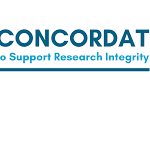
Photo by Wade Austin Ellis on Unsplash
If you want to know more about REF2021, the Research Excellence Framework website includes a number of frequently asked questions (FAQs), which might be useful if you have any queries about your own submission.
In the meantime, here is a selection of some relating to Impact.
Impact
Do all the outputs referenced in an impact case study need to be of at least two-star quality?
A case study should include references to up to six research outputs that represent the body of research or a research project that was carried out at the submitting institution. These should be key outputs that underpinned the impact, and that best demonstrate the quality of the body of work or project. The sub-panels will not expect each individual output to meet the quality threshold, but will wish to be satisfied that the listed work was predominantly of at least two-star quality.
Can the same impact case study be submitted by more than one submitting unit?
Where more than one submitting unit made a distinct and material research contribution to an impact, each of those submitting units may submit a case study of the impact. Each submitting unit will need to show that its research made a distinct and material contribution to the impact. This applies whether an institution wishes to submit the same impact in different submissions, or different institutions.
Can an institution submit an impact case study in a Unit of Assessment (UOA), even if the individual who conducted the research is returned in a different UOA?
Yes, we recognise that individual researchers may undertake research across multiple disciplines over time and that UOA boundaries are not rigid. Provided the underpinning research is within the scope of the UOA in which it is submitted, a case study may be submitted in a different UOA from the individual.
Is it a requirement for impact case studies to be based on underpinning research carried out by a Category A eligible staff member?
No. The underpinning research must be carried out by staff working in the submitting HEI and must be within the scope of the relevant UOA descriptor. It may include research undertaken by staff employed on non-Category A eligible contracts.
Can the same underpinning research can be used in more than one impact case study? And can these case studies be submitted within the same UOA?
Units are not prohibited from submitting more than one case study based on the same body of research. However, they should take into account the extent to which this might reduce the reach and significance of the impact described.
An impact case study is being built around my work but I am hoping to move institutions. Can I bring my impact to date with me?
The institution submitting a case study must have produced research which has made a distinct and material contribution to the impact described in the case study. Where a researcher has moved to a different institution during the period in which a body of research underpinning a case study was produced, the submitting institution should make clear that the research undertaken during the period the researcher spent at that institution made a material and distinct contribution to the impact claimed.
Can publications that link to impact case studies still be submitted as outputs?
Yes. Underpinning research referenced in a case study may also be included in a submission as an output (listed in REF2), without disadvantage. In these situations, the assessment of the impact case study will have no bearing on the assessment of the quality of the output.
Does the impact claimed need to be tied to an individual specific output within the body of work?
No. The panels recognise that the link between research and impact can be indirect and non-linear.
Want to know more?
For more information about Impact, see Part 3, Section 3 of the REF Guidance on Submissions and Part 3, Section 4 of the REF Panel Criteria and Working Methods.
Also, have a look at our other BU REF Week blog posts.

 REF Week: REF Frequently Asked Questions – Outputs
REF Week: REF Frequently Asked Questions – Outputs REF Week: REF Frequently Asked Questions – Staff
REF Week: REF Frequently Asked Questions – Staff REF Week: REF Frequently Asked Questions – Environment
REF Week: REF Frequently Asked Questions – Environment










 New Nepal scoping review on maternal & neonatal health
New Nepal scoping review on maternal & neonatal health Fourth INRC Symposium: From Clinical Applications to Neuro-Inspired Computation
Fourth INRC Symposium: From Clinical Applications to Neuro-Inspired Computation Writing policy briefs
Writing policy briefs Upholding Excellence: The Concordat to Support Research Integrity
Upholding Excellence: The Concordat to Support Research Integrity ECR Funding Open Call: Research Culture & Community Grant – Application Deadline Friday 12 December
ECR Funding Open Call: Research Culture & Community Grant – Application Deadline Friday 12 December MSCA Postdoctoral Fellowships 2025 Call
MSCA Postdoctoral Fellowships 2025 Call ERC Advanced Grant 2025 Webinar
ERC Advanced Grant 2025 Webinar Horizon Europe Work Programme 2025 Published
Horizon Europe Work Programme 2025 Published Horizon Europe 2025 Work Programme pre-Published
Horizon Europe 2025 Work Programme pre-Published Update on UKRO services
Update on UKRO services European research project exploring use of ‘virtual twins’ to better manage metabolic associated fatty liver disease
European research project exploring use of ‘virtual twins’ to better manage metabolic associated fatty liver disease